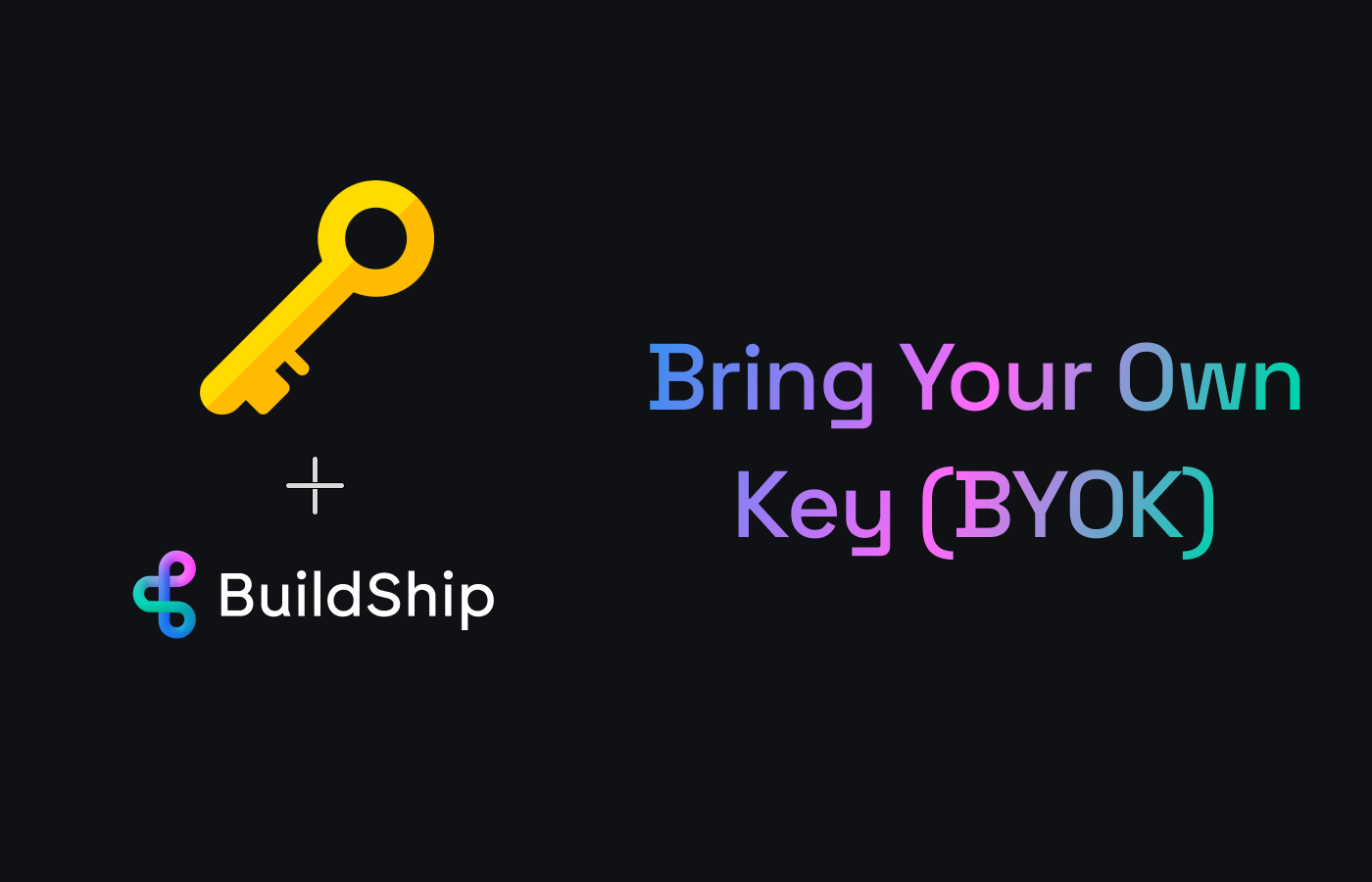Bring Your Own Key (BYOK)
This tutorial demonstates how you can implement "Bring Your Own Key" (BYOK) feature in BuildShip. BYOK allows individual users or businesses to let their end-users integrate their own API keys within workflows.
This ensures greater flexibility and cost management, particularly in scenarios where multiple users or clients require separate API access.

Let's dig deeper into how you can implement BYOK in your BuildShip workflows.
Prerequisites ✅
- A system within your front-end application where users can input and securely store their respective API keys.
Ensure that the provided keys are securely stored on your platform, implementing necessary security measures to protect sensitive information.
Accessing BYOK keys
Passing the user's API Key in the Request
Pass the user's API key as an Authorization header in the request made to your BuildShip's API. This header will serve as a means to authenticate and authorize the user's access to specific functionalities within your workflow.
Accessing the API Key
You can easily access the user's API key from the Request's Authorization Headers:
- Click on the Edit icon (✎) for the input field where you want to access the API key.
- Access the "Request" variable from the dropdown menu and select "Headers".
- Then, select the "Authorization" header from the list of headers.
BYOK Example Workflow
Let's take a look at how you can implement BYOK in your BuildShip workflow using the OpenAI Text Generator model within BuildShip:

This workflow showcases the use of the OpenAI Text Generator node, ensuring that each user can utilize their individual API keys and prompts received from request parameters.
"Get Authorization Header" Node
Validates the presence of the Authorization Header in the incoming request, ensuring the user's API key is included.
"Get Query Param" Node
Validates the existence of the prompt query parameter in the incoming request, which provides the prompt for Text
Generation.
"OpenAI Text Generator" Node
- API Key Input: Retrieves the
AuthorizationHeader from the incoming request containing the user's unique API key. - User Prompt Input: Fetches the Query Parameters from the incoming request, acquiring the specific prompt for Text Generation.
Click here (opens in a new tab) to get a JSON File for this example workflow which can be copied and pasted to your own project. Feel free to play around and tweak it according to your use-case.
Need Help?
- 💬Join BuildShip Community
An active and large community of no-code / low-code builders. Ask questions, share feedback, showcase your project and connect with other BuildShip enthusiasts.
- 🙋Hire a BuildShip Expert
Need personalized help to build your product fast? Browse and hire from a range of independent freelancers, agencies and builders - all well versed with BuildShip.
- 🛟Send a Support Request
Got a specific question on your workflows / project or want to report a bug? Send a us a request using the "Support" button directly from your BuildShip Dashboard.
- ⭐️Feature Request
Something missing in BuildShip for you? Share on the #FeatureRequest channel on Discord. Also browse and cast your votes on other feature requests.